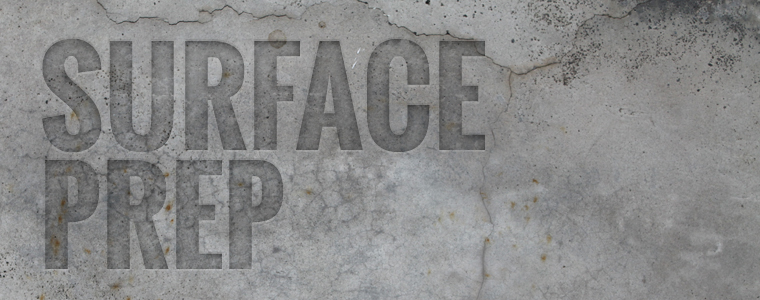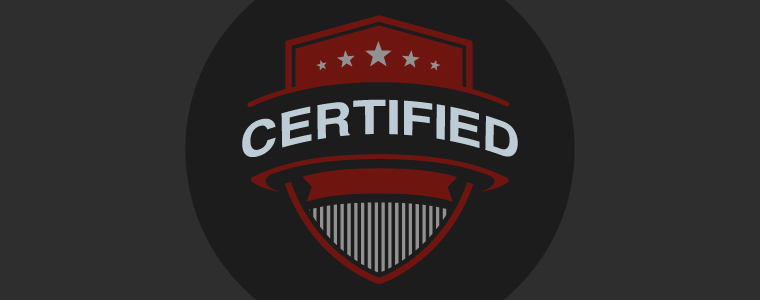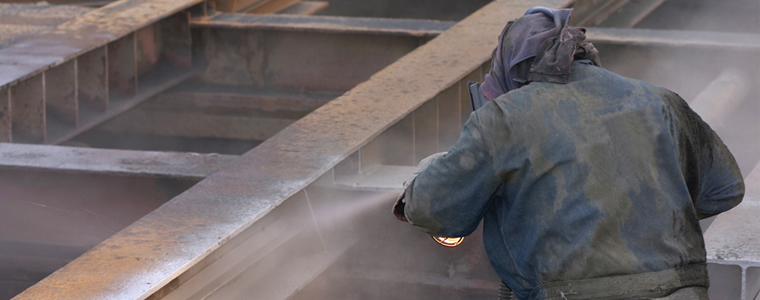Corrosion is an eyesore. Few will argue that. But while it may be an unsightly occurrence, looks are nothing compared to the potentially devastating health and safety effects of unchecked corrosion. Furthermore, it’s the corrosion that goes unseen that’s often the most dangerous. Continue reading “What does corrosion cost?”
Category: Quality Control
The different types of corrosion
Broadly speaking, corrosion can be separated into two distinct types: generalized and localized. It’s possible to further subdivide corrosion from here, but dividing a corrosion problem is a good place to start. If corrosion on a particular asset is generalized, diagnosis and treatment will be relatively straightforward. Continue reading “The different types of corrosion”
Inorganic and organic zinc primers
Note: This post is part of a larger series on generic coating types. Click the button at the bottom of this post to download the entire guide. Continue reading “Inorganic and organic zinc primers”
Four essential steps for concrete surface preparation

As with any surface, pre-painting preparation will have a lot to do with how successfully a coating performs when applied to concrete. The most desirable method of surface preparation will be determined by the product being used, the current state of the surface and the structure’s intended use.
If you are a facility owner or manager in charge of evaluating proposals for concrete surface preparation work, know that there are a few things that should be clearly stated in a contractor’s proposal. The methods for cleaning, profiling and spot-repairing the surface should all be covered in some detail. Also consider discussing anticipated levels of noise, dust and cleanup required by the job.
Before beginning the surface prep phase, it’s a good idea to see how the manufacturer of the intended concrete coating recommends proceeding. It may be that a certain method of surface prep is recommended, and there will certainly be recommended specifications for surface profile.
The most trusted industry standard for concrete surface preparation is SSPC-SP 13/NACE 6 Surface Preparation of Concrete. This standard lays out specific requirements for preparation by thermal, mechanical and chemical methods. Whatever specific methods are recommended, here are four general steps that are essential for pulling off a successful concrete surface preparation job.
1. Survey what you’ve got
A survey of the surface should aim to determine the strength and moisture content of the concrete. Any laitance— small particles built up on the surface due to the use of a water heavy mixture– should be removed before the coating is applied. Laitance usually appears as a white, powdery film over the concrete surface. It will negatively affect coating adhesion and must be removed before a coating is applied.
In addition to testing moisture levels, it’s important to test for oil and grease, which will have an effect on the method used to clean the surface. Some methods, such as acid etching, are ineffective at removing these contaminants, and should not be used when they are present. In most cases, if water droplets bead up on the concrete surface, either oil, grease or some sealing agent is present on the surface and will need to be removed. These tests should be backed up by more rigorous testing that measures condensation on plastic film if there is any doubt about moisture content.
2. Clean the surface
All dust, dirt, debris, curing agents, oil and grease must be removed from the surface before a coating is applied or it will fail to adhere properly. A simple water jetting operation can remove many of these substances, but grease and chemical stains may require specific cleaning agents to be effective. It is important that the chosen method for profiling the surface does not re-contaminate the clean surface.
3. Profile the surface
Some surface cleaning methods have the added benefit of profiling the surface while they clean. Because each coating comes with surface profile guidelines, abrasive blasting is often chosen to roughen the surface to the level mentioned by the coating manufacturer. Abrasive blasting also has the added benefit of removing laitance and other solid contaminants, while profiling the surface at the same time.
Acid etching is another method sometimes used to profile a concrete substrate, but this method has severe limitations. It is not viable on horizontal or overhead surfaces and it can also be dangerous if applied improperly.
4. Repair the surface
It’s important to remove all protrusions sticking out from the concrete more than 1/16’’ by grinding or scraping, and to patch any holes and cracks that persist after the initial application. Irregularities in the concrete should be patched or removed with an improved material. These fixes will need to be spot-coated later, so it’s important to know the cure time for the patch material in order to ensure paint is not applied to it too quickly.
Project specifications
Each of the above steps should be covered in much greater detail in the project’s specifications. Thorough and well-planned project specifications are key to a quality project. To get the conversation started with a certified industrial painter about your next concrete coating project, get in touch with Thomas Industrial Coatings.
QP 1 and other SSPC certifications explained
Industrial painters are proud of the certifications they’ve earned. This can at least partially be attributed to the fact that they’re not easy to come by. Independent organizations like the Society for Protective Coatings (SSPC) go to great lengths to make sure that not just any regular Joe can say they’re an industrial painter.
According to SSPC, the certifications were enacted “to answer an industry need voiced by contractors, owners and others who hire industrial painting contractors.” At the time, no other industry standards for industrial painting existed. Customers wanted to know that the contractors they hired had the skills and ability to get the job done safely and correctly.

Since awarding an industrial painter one of their certifications is, at least in some sense, vouching for the painter, these certifications are meant to be a true test of a painting outfit’s ability. Obtaining these certifications requires skill, organization and professionalism. It’s no easy feat, which makes earning an SSPC certification an accomplishment to be proud of.
Here are a few of the most common SSPC Certifications explained:
QP 1 Certification
The SSPC QP 1 Certification is meant to attest to an industrial painter’s ability to apply coatings to complex industrial and marine coatings. It tests the painter’s proficiency in management, quality control and compliance in the areas of safety, health and the environment. Many of the structures we work on most frequently are accounted for with this certification, including bridges, storage tanks, marine vessels, water and wastewater storage facilities, chemical plants and more.
The QP 1 certification is considered the minimum professional certification for an industrial painter. It is obtained by submitting a petition to the SSPC that describes the businesses and then by undergoing an on-site audit while work is ongoing. Here’s a rundown of the documentation that must be on hand in order to successfully complete the SSPC QP 1 audit.
QP 2 Certification
The SSPC QP 2 Certification is meant to certify a contractor’s ability to safely manage and remove hazardous materials while in the field. This certification also verifies that a contractor’s personnel has the necessary qualifications and training to deal with hazardous materials, and that all safety and environmental regulations are complied with.
A QP 2 certification is obtained in the same way as a QP 1 certification, but since it builds heavily on the skills required of a QP 1 certification, the QP 1 is a prerequisite. Much of the documentation required for a QP 1 certification is the same for a QP 2 certification, with the addition of some material for containment, exposure monitoring and other documentation of hazards.
QS 1 Certification
The SSPC QS 1 Certification is designed to more stringently evaluate a contractor’s advanced quality management system. It’s standards for assessing the quality control documentation and record-keeping procedures of a painting contractor are more exacting than for a QP 1 or QP 2 certification.
Discriminating owners can specify that contractors bidding for their projects have the QS 1 certification if they feel that advanced standards of quality control are called for on their project. Contractors who have secured this certification have shown a meticulous attention to detail when it comes to testing and documenting their work.
Selecting a painter
These are three of the more common industrial painting certifications awarded by the SSPC. Checking a contractor’s certifications is a good first step when selecting a painter. For a more thorough rundown of things to consider when hiring an industrial painter, download our Buyer’s Guide through the link below.
Surface preparation: A brief overview
It’s like a mantra for painters. We’ve said it on our blog before. “Never paint a dirty surface.” Improper surface preparation is a surefire way to derail an industrial painting project before it really gets moving. Some statistics suggest that the vast majority of coatings failures can be traced back to inadequate surface preparation. To be sure, surface preparation is a portion of your project you want to make sure your industrial painter has the skills and experience to execute flawlessly.

Careful consideration must be taken to ensure the surface is free from oil and dirt, preexisting layers of paint, excess moisture, rust and other contaminants. Readings must also be taken to ensure ambient conditions fall within recommended range for moisture and temperature for the product being applied. Surface preparation is such an important part of any painting job that it should receive its own section in the thorough job specification document that outlines all the work to be done on a given project.
The method
The method used to prep a surface before painting will rely on a number of factors. The substrate (surface to be painted), environment and desired service life of the coating to be applied will all factor into the decision. Blast profile depth is another important measure when determining which method of surface preparation is right for your project. This will tell you how rough or smooth the substrate needs to be for optimum coating adhesion. Some coatings require a profile as low as half a mil (very smooth) or as high as five mils (very rough).
Standards set by The Society for Protective Coatings (SSPC) codify surface preparation to assure owners that they are achieving the same results from project to project and painter to painter. These standards specify what the substrate should look like after various levels of preparation. They correlate to different tools used in the process, with standards for high-pressure water jetting, slurry blasting, sandblasting and other methods.
It should be noted that these SSPC standards are not numerically ordered by cleanliness or other statistic, with SSPC SP 1 being the cleanest and SSPC SP 16 being the least clean, or vice versa. The numbers simply stand for different methods of surface preparation.
Talk to a painter
Surface preparation is an umbrella term for a large number of techniques, each with their own strengths and weaknesses when it comes to readying a substrate to be painted. It can take an entire career to master them all. That’s why it’s important that a qualified professional lays out this section of the process specifications, and experienced applicators execute this crucial portion of the job.
If you’re ready to talk about surface preparation taking place of your building or equipment, get in touch with Thomas Industrial Coatings to get the conversation started.


